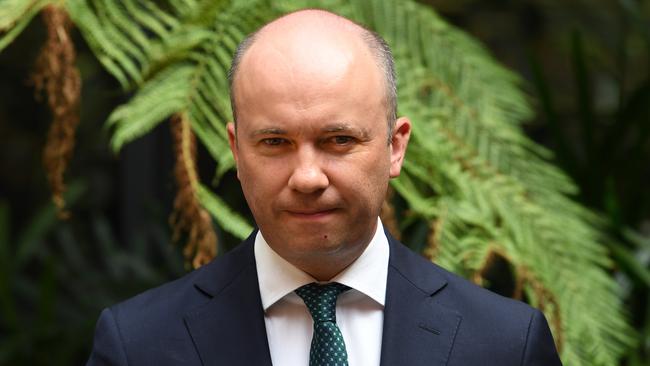Energy overhaul predicts jobs, fall in prices
NSW will incentivise the replacement of all coal-fired power plants with renewables by 2042.

The NSW government will incentivise the replacement of all coal-fired power plants with renewable energy by 2042 in a landmark policy that it claims will provide investors with certainty and keep electricity prices low.
The policy, to be released on Monday ahead of the state’s budget next week, will push household power prices down by $130 a year, according to government forecasts. The blueprint, which appears to also be backed by NSW Labor, will — along with the election of Joe Biden and a push by business organisations including the Australian Industry Group — add pressure on the Morrison government to outline a more comprehensive climate change policy.
A comprehensive blueprint of the policy, obtained by The Australian, outlines an intention to move ahead with large-scale construction of wind and solar farms in regional areas of NSW.
This is expected to create roughly 9000 jobs and attract $32bn in private investment over the next decade while existing coal-fired power stations are taken offline.
“NSW has some of the best natural resources in the world and this road map is about acting now to leverage our competitive advantage and to position NSW as an energy superpower,” said Environment Minister Matt Kean.
Known as the Electricity Infrastructure Roadmap, the document outlines how the government intends to generate, store, transmit and incentivise private enterprise to transform the state’s electricity network to one that is expected to be cheaper and carbon-friendly.
According to the Australian Energy Market Operator, NSW requires up to three gigawatts of energy storage by mid-2030, by which time a number of coal-fired power stations will have closed.
Four of the five existing coal-fired power stations in NSW are due to expire within 15 years, beginning with the Liddell Power Station in Muswellbrook, in northern NSW, in 2022-2023. They provide 75 per cent of the state’s supply.
The Berejiklian government has previously announced pilot programs of renewable energy zones (REZ), which generate electricity through vast wind and solar farms. But the market more broadly has struggled to attract long-term investment in renewable energy infrastructure, especially on the transmission side of the network, due to ongoing policy uncertainties. The release of the road map seeks to quell this uncertainty by shoring up investment through several mechanisms, beginning with increasing generation through REZ sites in regional NSW. Powered by solar farms and wind turbines, these zones will be supported by pumped hydro projects and battery power to ensure power is available when supply falls short.
Pumped hydro involves storing water in a reservoir and releasing it through a series of turbines to create electricity. Because of the financial uncertainty around the development of these projects, which involve costly studies, the government will create a $50m grants program to incentivise developers with pursuing early stage production costs.
The intention is to establish up to three gigawatts of pumped hydro projects through the assistance of the grants program. A recent study conducted with the Australian National University found there were 20,000 reservoirs across NSW that would be suitable for use in such projects.
“If a project moves to the construction stage, the grant will be repaid to the NSW Government,” the document states.
To solve the problem of securing investments more broadly, the government will establish a Transmission Development Scheme to “de-risk” investment in REZ sites and provide low-cost financing options. These will be independently assessed to prevent cost overruns.
A separate entity, known as the Electricity Infrastructure Investment Safeguard, will aim to provide investors with revenue certainty through long-term service agreements.







To join the conversation, please log in. Don't have an account? Register
Join the conversation, you are commenting as Logout